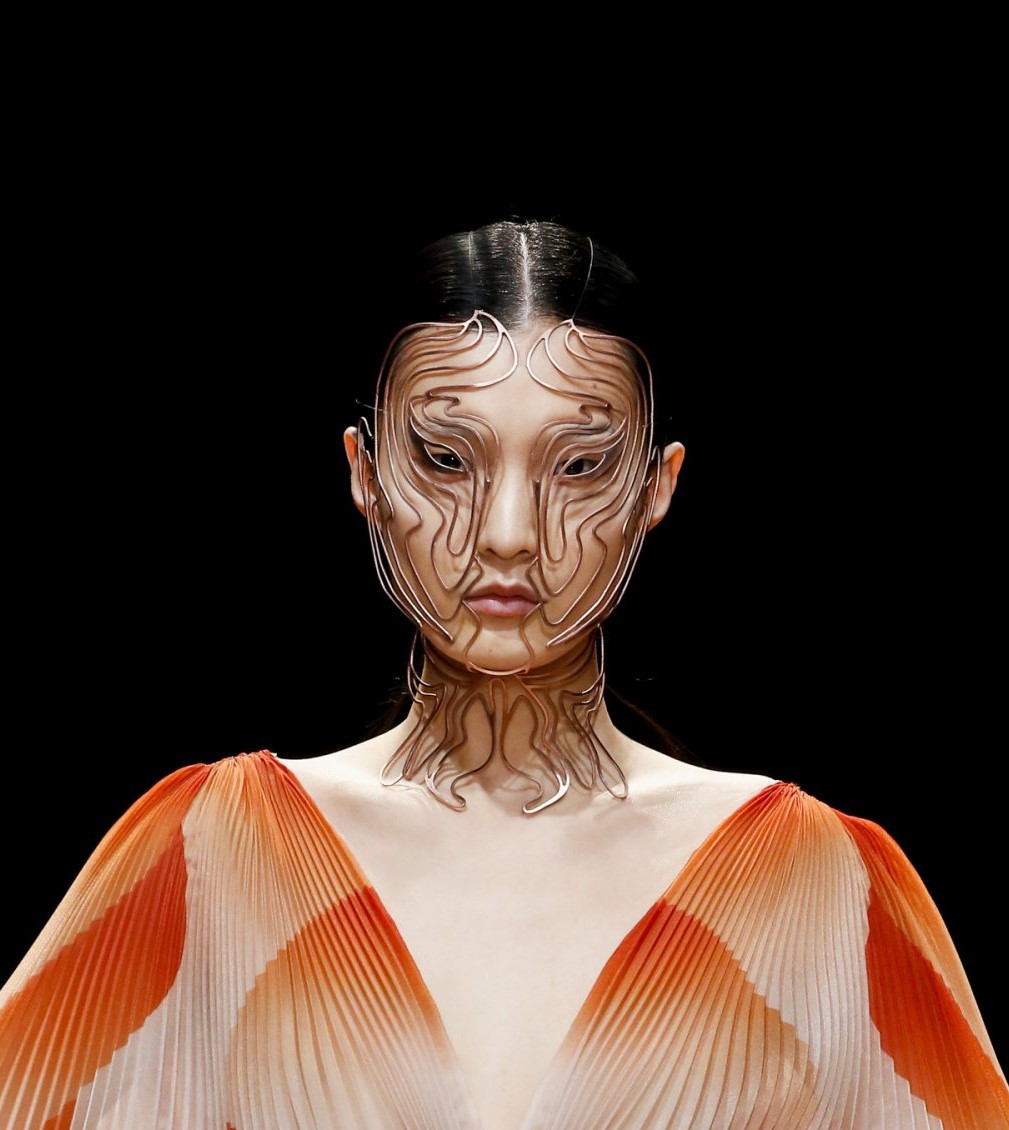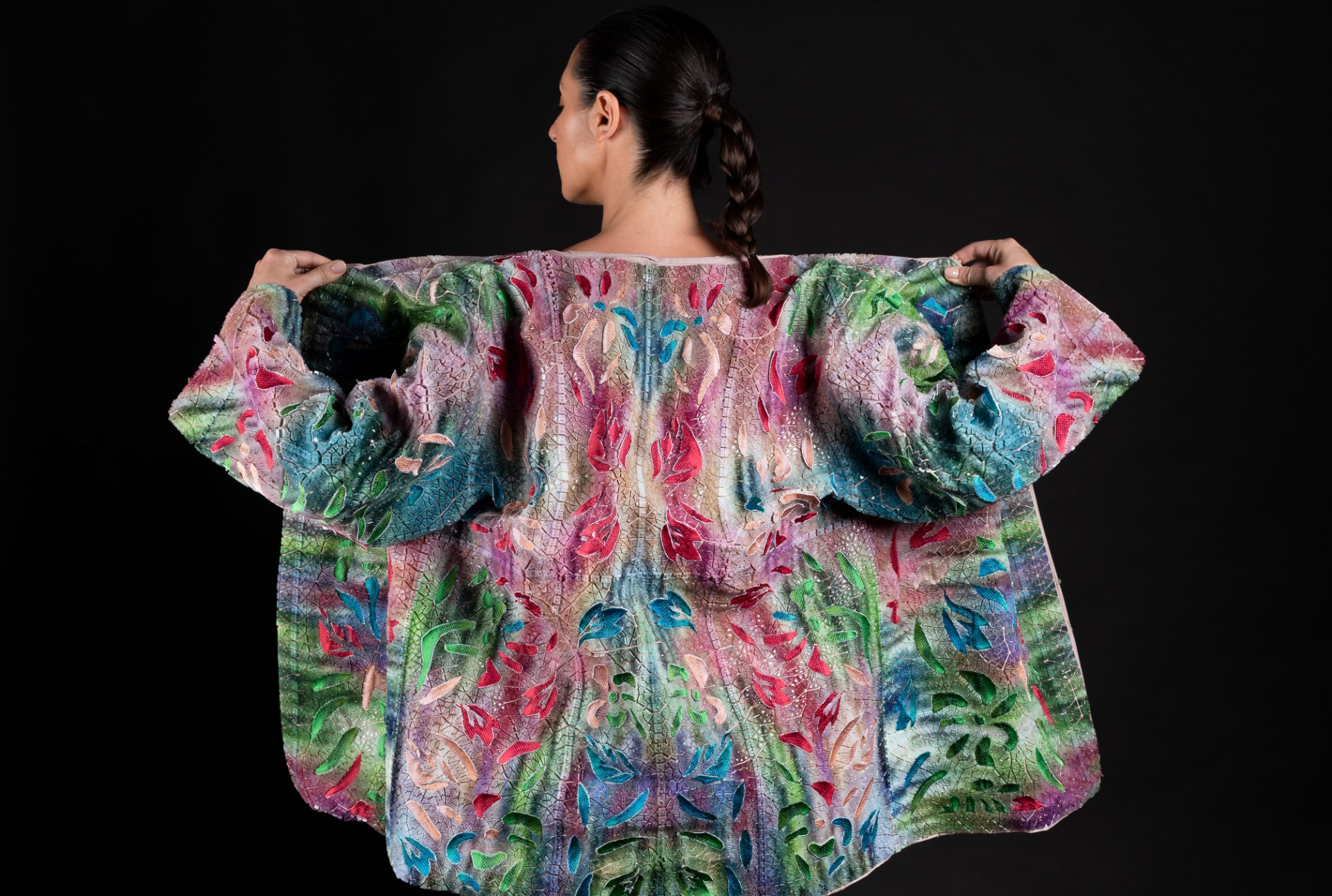Canadian musician and partner of billionaire business magnate Elon Musk, C Boucher, known professionally as Grimes, has taken to the 2021 Met Gala’s red carpet in a striking gown custom-designed using 3D techniques by fashion designer Iris Van Herpen.
Inspired by the upcoming film adaptation of Frank Herbert’s American novel, Dune, the “Bene Gesserit” gown is comprised of a nude illusion bodice that features hand-cast extended lightning bolt shapes arranged in a 3D laser-cut pattern, in addition to 26 meters of gradient-dyed, hand-pleated silk.
The gown is the latest high-profile garment from Van Herpen that integrates digital manufacturing techniques into its creation, reportedly taking over 900 hours to perfect.
Pioneering 3D printing in fashion
Van Herpen has been pioneering the integration of 3D printing and digital manufacturing techniques in haute couture fashion design for more than a decade. The Dutch designer has a vast body of work that incorporates the use of 3D printing and other modern technologies, having first designed her “Crystallization” top 3D printed from white polyamide in 2010.
Since then, she has gone on to produce 3D printed fashion pieces for the likes of Bjork, Beyonce, and Lady Gaga, and has previously partnered with 3D printing companies such as Stratasys and Materialise to bring her 3D printed designs to the catwalks of Paris Fashion Week. Such designs have included a gown sown onto Game of Thrones actress Gwendoline Christie in real-time, and a “Magnetic Motion” collection inspired by the Large Hadron Collider that combined 3D printing with injection molding, laser cutting, and handcrafting techniques.
Van Herpen has previously developed a “Foliage” fabrication technique in partnership with TU Delft that enables her to 3D print delicate leaf patterns directly onto a fine, semi-transparent fabric. More recently, she debuted her sculptural couture collection “Shift Souls” at the Musee des Beaux-Arts that featured her “Cellchemy” face jewelry range 3D printed in partnership with the university.

The “Dune-esque” gown
The red carpet for this year’s Met Gala celebrated the new exhibit “In America: A Lexicon of Fashion”, which prompted Grimes to turn to Van Herpen for her technologist approach to pushing the boundaries within haute couture fashion.
Van Herpen’s “Bene Gesserit” gown is reportedly “inspired by distant futures” and features hundreds of mirror-finish liquid silicone lightning bolt shapes arranged in a 3D laser-cut pattern. The dress is also likely to feature several other digital manufacturing techniques utilized by Van Herpen in the past.
Grimes finished the look with an original mask from the Dune film and a medieval sword cast from a Colt AR-15A3 gun that is a permanent piece of the Met’s collection.
In an Instagram post, Van Herpen revealed that in November the custom creation will be auctioned with Sothebys and the proceeds will fully be donated to the Amazon Conservation Association and the Rainforest Trust.
Grimes has previously worked with Van Herpen on a number of occasions, having worn the designer’s “Suminagashi” dress in her music video for single Violence, and featuring several other garments in various magazine shoots.
Digital manufacturing haute couture
3D printing has increasingly taken to the stage at fashion events such as the Met Gala, with a number of other fashion designers also leveraging the technology to push the boundaries of haute couture clothing design.
The 2019 Met Gala, for instance, saw several well-known celebrities model outfits 3D printed by GE Additive and Protolabs, while that year’s New York Fashion Week saw Stratasys unveil its ability to 3D print directly onto fabric in partnership with esteemed fashion designers threeASFOUR and Travis Fitch. Last year, the firm revealed two collaborative works with fellow designers Ganit Goldstein and Julia Koerner which leveraged its direct-to-textile PolyJet technology.
3D printing has also been utilized by emerging designers such as Mingjing Lin, whose work 3D Printing Industry has followed for some time, and who has been combining 3D printing, parametric modeling and other digital tools to create intricate, fluid, and drapeable clothing designs.

Subscribe to the 3D Printing Industry newsletter for the latest news in additive manufacturing. You can also stay connected by following us on Twitter and liking us on Facebook.
Looking for a career in additive manufacturing? Visit 3D Printing Jobs for a selection of roles in the industry.
Subscribe to our YouTube channel for the latest 3D printing video shorts, reviews and webinar replays.
Featured image shows close up of model wearing “Cellchemy” facemask. Photo via Iris van Herpen.


